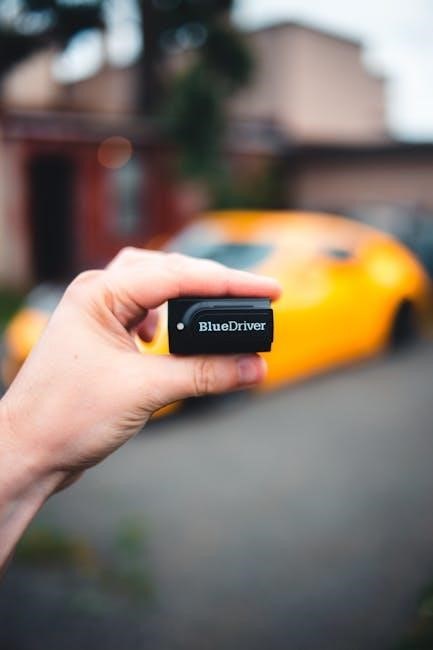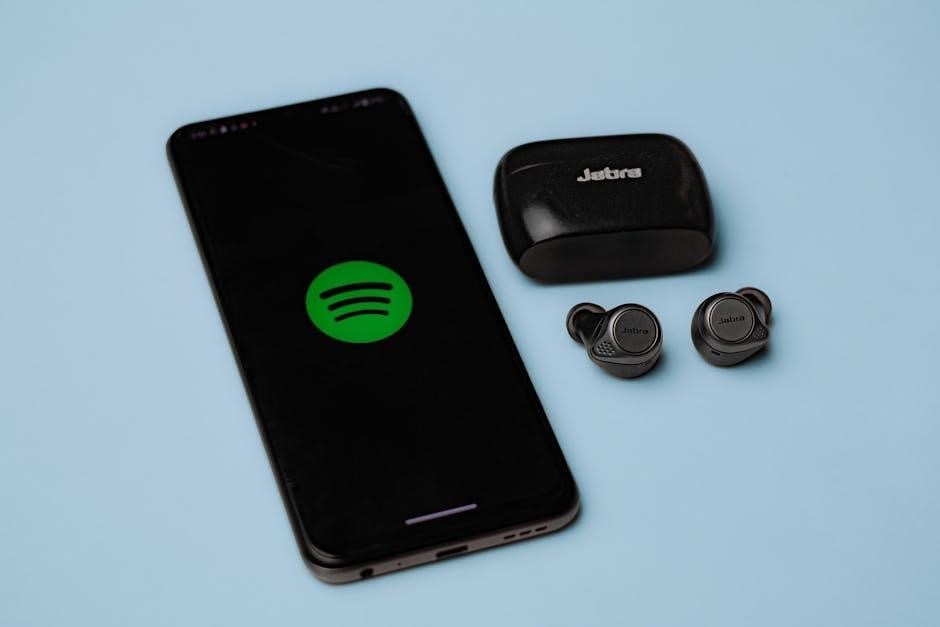Plantronics Bluetooth Headset Manual: A Comprehensive Guide
Welcome to your comprehensive guide to Plantronics Bluetooth headsets! This resource provides valuable information for users seeking to understand and optimize their headset experience. From initial setup to advanced troubleshooting, we’ll cover essential aspects. This will ensure seamless operation and optimal performance.
Plantronics, now Poly, has been a leader in audio technology for decades, consistently delivering innovative and reliable Bluetooth headsets. These headsets are designed for a variety of users, from professionals needing hands-free communication in the office to individuals seeking a convenient way to enjoy music and calls on the go. Understanding the specific features and functionalities of your Plantronics headset is crucial for maximizing its potential.
This section provides a general overview of Plantronics Bluetooth headsets, highlighting their key benefits and common applications. We’ll explore the ergonomic designs, advanced noise-canceling technologies, and seamless connectivity options that set Plantronics headsets apart. Whether you’re a new user or a seasoned pro, this introduction will lay the foundation for a deeper understanding of your device. You’ll learn how to navigate the features and leverage the capabilities of your Plantronics headset to enhance your daily communication and audio experiences.
Finding Your Plantronics Headset Manual
Locating the correct user manual for your Plantronics Bluetooth headset is the first step towards unlocking its full potential. Plantronics provides several avenues for accessing these essential documents. The most direct method is to visit the official Poly (formerly Plantronics) website. Navigate to the “Support” or “Downloads” section, where you can search for your specific headset model.
Typically, you’ll find a search bar or a product directory to help you narrow down your options. Once you’ve identified your headset, the corresponding manual will be available as a PDF download. Alternatively, you can often find user manuals by searching online using your headset’s model number followed by “user manual” or “guide.” Reputable online retailers and support forums may also host these documents. Remember to verify the source of the manual to ensure its authenticity and accuracy. Having the correct manual at your fingertips will empower you to effectively use and troubleshoot your Plantronics headset.
Understanding Your Headset Model
Before diving into the specifics of your Plantronics Bluetooth headset, it’s crucial to accurately identify your specific model. This ensures you’re referencing the correct manual and troubleshooting guides. The model number is typically printed on the headset itself, often located on the earcup, headband, or underside of the device. It may also be found on the original packaging or accompanying documentation.
Once you’ve located the model number, take note of any additional identifiers, such as “UC” (Unified Communications) or “Voyager Series.” These designations indicate specific features or compatibility with certain platforms. Knowing your headset model will enable you to find the correct resources online, including user manuals, firmware updates, and troubleshooting tips. This will allow you to accurately understand its features, functionality, and specifications. Furthermore, it helps with addressing any potential issues that may arise during use. Accurate model identification is the bedrock of a smooth Plantronics headset experience.

Pairing Your Plantronics Bluetooth Headset
Establishing a Bluetooth connection is key to using your Plantronics headset. This section guides you through pairing with devices like phones, computers, and tablets. We will provide step-by-step instructions and troubleshooting tips for a seamless connection.
Initial Pairing Process
The first step to enjoying your Plantronics Bluetooth headset is the initial pairing process. Start by ensuring your headset is sufficiently charged. For most models, the pairing process begins with the headset powered off. Then, press and hold the power button until the indicator light flashes in a pairing-specific pattern, often alternating blue and red. This puts the headset into pairing mode.
Next, on your phone, computer, or other Bluetooth-enabled device, navigate to the Bluetooth settings. Initiate a device search; You should see your Plantronics headset model appear in the list of available devices. Select your headset, and if prompted, enter the pairing code (usually “0000”). Once successfully paired, you should hear a confirmation tone or voice prompt from the headset. The Bluetooth indicator light should also change to indicate a successful connection, usually a solid blue light or a slow, periodic flash. This indicates that your headset is ready for use. Consult your specific device’s user guide for detailed instructions.
Pairing with Multiple Devices
Many Plantronics Bluetooth headsets support pairing with multiple devices, allowing you to seamlessly switch between your phone, tablet, or computer. This feature, often referred to as multipoint technology, enhances convenience. To pair with additional devices, ensure your headset is not actively connected to any device. Then, initiate the pairing process as outlined in the “Initial Pairing Process” section. Your headset should enter pairing mode, allowing you to connect a second device.
Some Plantronics models have a dedicated button or a specific sequence of button presses to initiate multipoint pairing. Refer to your headset’s user manual for precise instructions. Once both devices are paired, the headset will typically prioritize incoming calls or audio from the most recently connected device. You may need to manually switch between devices via your device’s Bluetooth settings or through voice commands, depending on the headset model. Managing multiple connections effectively allows you to stay connected across all your devices without constant re-pairing.
Troubleshooting Pairing Issues
Encountering pairing issues with your Plantronics Bluetooth headset can be frustrating. One common issue is that the headset is not discoverable. Ensure the headset is in pairing mode, usually indicated by a flashing LED. If your device cannot find the headset, try restarting both the headset and the device you are trying to pair with.
Another potential problem is interference. Bluetooth signals can be disrupted by other wireless devices, walls, or even your own body. Move closer to the device you are pairing with and eliminate potential sources of interference. If you have previously paired the headset with another device, it may be trying to connect to that device instead. Disable Bluetooth on other devices or clear the headset’s pairing list by consulting your user manual for the reset procedure. If problems persist, a factory reset of the headset might resolve the issue. Always consult your specific Plantronics headset model’s user guide for detailed troubleshooting steps.

Basic Operations and Controls
Understanding your Plantronics headset controls is key to efficient use. Learn to navigate power functions, adjust volume, and manage calls effortlessly. Mastering these basic operations will enhance your overall user experience and productivity.
Powering On/Off
To power on your Plantronics Bluetooth headset, locate the power button, typically found on the earcup or along the device’s edge. Press and hold this button for a few seconds until you see an LED indicator light up, signaling that the headset is now active. Some models may also provide an audible cue, such as a tone or voice prompt, confirming the power-on status.
Switching off the headset follows a similar process. Press and hold the same power button for a slightly longer duration until the LED indicator turns off or you hear an alternate audible cue. Consistently powering off when not in use helps conserve battery life, ensuring your headset is ready when you need it.
Different models may have slightly varying button placements or indicators, so always refer to your specific headset’s user guide for precise instructions.
Volume Adjustment
Adjusting the volume on your Plantronics Bluetooth headset is straightforward. Most models have dedicated volume buttons, typically marked with “+” and “-” symbols, located on the earcup or along the device’s side. Press the “+” button to increase the volume and the “-” button to decrease it. Each press will usually result in a small incremental change in volume.
Some Plantronics headsets feature a volume wheel or a touch-sensitive slider for more precise control. For these, simply rotate the wheel or slide your finger along the sensor to achieve the desired volume level. Be mindful of the volume level to avoid potential hearing damage. Start with a lower volume and gradually increase it until you reach a comfortable level.
Certain Plantronics headsets also support volume adjustment through your connected device (smartphone, computer, etc.). Syncing both device and headset volumes ensures optimal sound.
Call Management (Answering/Ending/Muting)
Managing calls on your Plantronics Bluetooth headset is intuitive. To answer an incoming call, press the designated call control button, which is often located on the earcup or the main body of the headset. A single press is usually sufficient to accept the call. To end a call, press the same call control button again.
Muting your microphone during a call is also simple. Most Plantronics headsets have a dedicated mute button. Pressing this button will toggle the microphone on or off. Some models may provide an audible or visual cue to indicate whether the microphone is muted. Others allow muting through voice command.
For advanced call management features like call waiting or transferring calls, refer to your specific headset model’s user manual. Certain Plantronics headsets also support voice commands. This enables you to answer, end, or mute calls hands-free.

Charging and Battery Life
Maintaining optimal battery performance is key for your Plantronics Bluetooth headset. Understanding charging procedures and battery indicators will extend its lifespan. This will ensure it’s always ready when you need it, whether at work or on the go.
Charging Instructions
To effectively charge your Plantronics headset, connect the USB cable to the headset’s charging port and a power source, such as a computer or wall adapter. For models with a charging case, place the headset inside the case to initiate charging. Press the case button if needed to start the process.
Ensure the headset is properly seated in the charging case or securely connected to the USB cable. Charging times may vary depending on the model and battery level. Refer to your headset’s user guide for specific charging duration guidelines.
It’s recommended to use the Plantronics-supplied charging cable and adapter for optimal charging performance. Avoid using damaged cables or adapters, as this could lead to charging issues or damage to the headset.
Regularly charging your headset ensures it’s always ready for use, maximizing its lifespan and performance. When not in use, store your headset in a cool, dry place to preserve battery health.
Understanding Battery Indicators
Plantronics headsets typically employ visual or auditory cues to indicate battery status. Visual indicators often involve LED lights that change color or blink patterns to represent different battery levels. A solid green light might signify a full charge, while a blinking red light could indicate low battery.
Auditory indicators may include voice prompts or beeps that alert you to the battery level. For example, the headset might announce “Battery High,” “Battery Medium,” or “Battery Low” when powered on or during use. Pay attention to these cues to avoid unexpected power outages.
Refer to your specific Plantronics headset model’s user manual for detailed information on interpreting the battery indicators; The manual will provide a comprehensive explanation of the meaning behind each visual and auditory signal.
Some Plantronics headsets also offer battery level information through a companion mobile app. This app can provide a more precise battery percentage and allow you to monitor usage patterns. Consistent attention to these indicators ensures uninterrupted communication;

Troubleshooting Common Issues
Encountering problems with your Plantronics Bluetooth headset can be frustrating, but many issues can be resolved with simple troubleshooting steps. One common problem is pairing failure. Ensure Bluetooth is enabled on your device and that the headset is in pairing mode, often indicated by a blinking light. If pairing continues to fail, try resetting the headset by holding down the power button for an extended period.
Another frequent issue is poor audio quality. Check the headset’s volume level and ensure it is properly fitted in your ear. Interference from other electronic devices can also cause audio distortion; try moving away from potential sources of interference.
If the headset won’t charge, verify that the charging cable is securely connected to both the headset and a power source. Test the charging cable with another device to rule out a faulty cable. For persistent problems, consult the Plantronics support website or user manual for specific troubleshooting advice related to your headset model.
